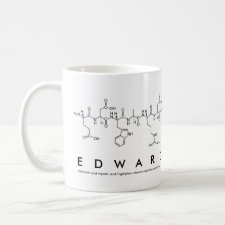
Authors: Lai EPC, Hassanzadeh-Khayyat M, Do G
Article Title: Degradation kinetics of pharmaceuticals in molecularly imprinted polymer particles by acid and hydrogen peroxide treatments.
Publication date: 2011
Journal: Clinical Biochemistry
Volume: 44
Issue: (13, Supplement 1)
Page numbers: S8.
DOI: 10.1016/j.clinbiochem.2011.08.024
Alternative URL: http://www.sciencedirect.com/science/article/pii/S0009912011014809
Abstract: Introduction: Many pharmaceuticals that have been detected along with their metabolites in water can potentially impact on human and environmental health. Diclofenac (DFC), a widely used pharmaceutical for instance, is largely regarded as one of the most devastating environmental toxicant. There are various technologies so far developed to remove these compounds from water, such as powdered activated carbon, UV light irradiation, ozonation, ultrasonolysis, and sonophotocatalytic degradation. In this research, molecularly imprinted polymers (MIP) are developed for the selective removal of pharmaceuticals from water using DFC as a model compound.
Material and methods: New MIP particles were synthesized by precipitation polymerization using DFC as a template. DFC-MIP aqueous suspensions were exposed to hydrogen peroxide, hydrochloric acid and nitric acid. The stability of the DFC in these media was monitored by UV-visible spectrophotometry. Degradation efficiencies were assessed by high performance chromatography, capillary electrophoresis and mass spectrometry. MIP particles regeneration as well as re-binding of DFC was also examined in equilibrium binding experiments.
Results: UV-visible spectrophotometry (especially absorbance at 276 nm) showed that the DFC inside MIP particles degraded to different extents, depending on the hydrogen peroxide or acid concentration as well as the treatment time. The degradation efficiencies were confirmed by high performance chromatography and capillary electrophoresis. After treatment, the MIP particles were regenerated by washing with water at least six times. Unfortunately, re-binding of DFC by the MIP particles proved to be uncertain after exposure for 24 hours. Mass spectrometric analysis is currently underway to further investigate the chemical and biochemical properties of DFC and its degradation products.
Conclusion: DFC inside MIP particles degraded most efficiently in the presence of nitric acid. A degradation product may still occupy the binding cavities inside, and re-binding with DFC can be challenging to require more research.
Template and target information: Diclofenac, DFC



Join the Society for Molecular Imprinting

New items RSS feed
Sign-up for e-mail updates:
Choose between receiving an occasional newsletter or more frequent e-mail alerts.
Click here to go to the sign-up page.
Is your name elemental or peptidic? Enter your name and find out by clicking either of the buttons below!
Other products you may like:
 MIPdatabase
MIPdatabase









